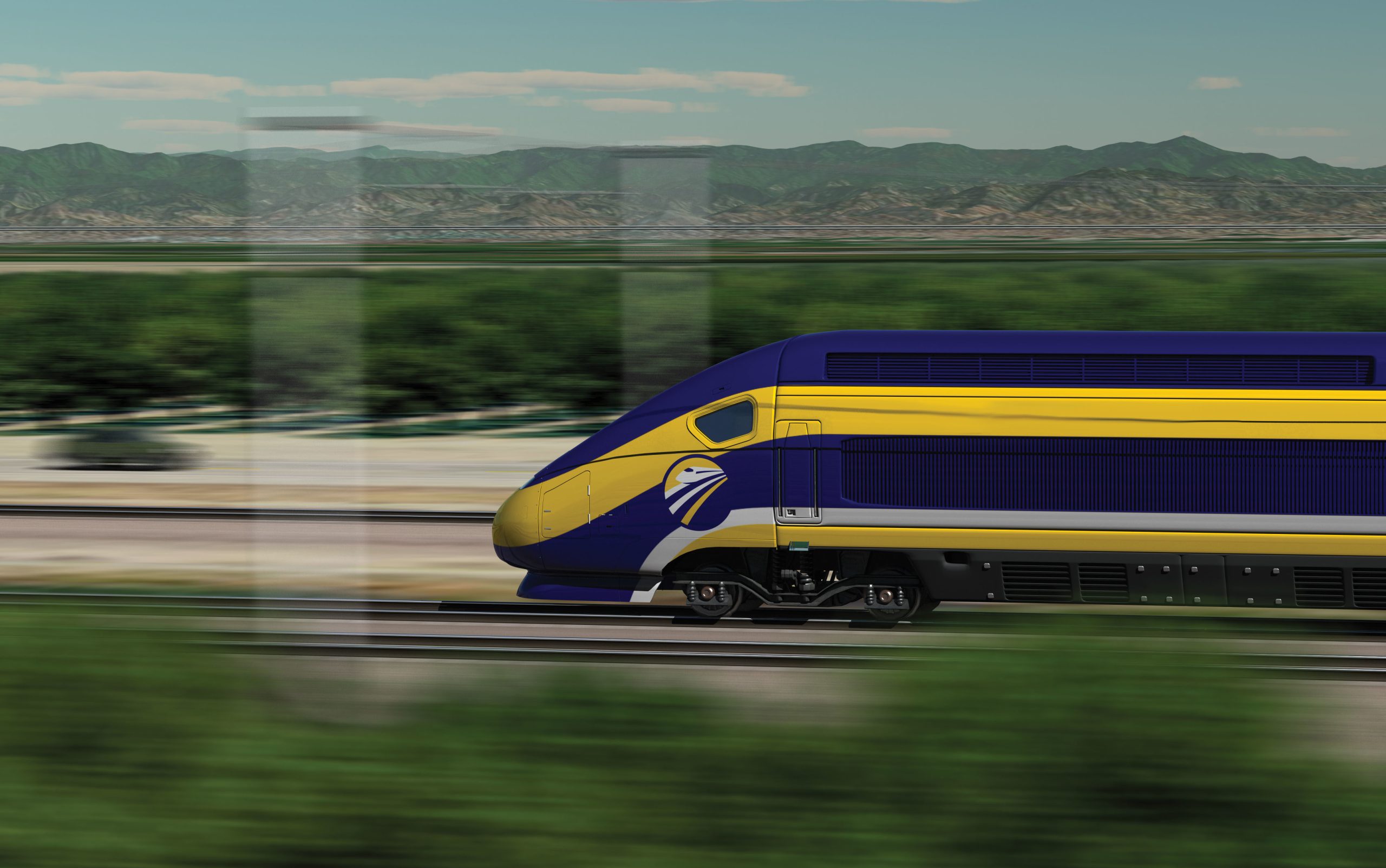An HSR official told Newsweek that the showcase is “the culmination of years of construction progress, outreach, and community collaboration to make sure these trains and this system mirrors the diversity and vibrancy of the people who’ll ride it.”
Too bad this grand “culmination” arrived so late. The project was approved by voters in 2008 with service to begin in 2020. Yet testing won’t even begin until 2028 and no one can say for sure when the first paying passengers will board.
It’s reasonable to wonder just how this happened in a state that fearlessly built freeways in the 1960s after it had adopted a 12,241-mile freeway plan in 1959, the Golden Gate Bridge during the Great Depression, and a 444-mile aqueduct that moves water from the Sacramento-San Joaquin Delta to Southern California. The state had a reputation for its eagerness and ability to develop infrastructure.
But it’s no longer the California that “was built on an expansive and well-thought-out infrastructure plan.”
Freeway construction backlash began in the 1960s, but it wasn’t until 1975, that, says Access magazine, “the state formally renounced its 1959 California Freeway System plan and adopted a new ‘multimodal, stance.” The state’s “freeway era” entered a state of sclerosis.
The California HSR was promised as a modern, Euro-style means of transportation that would take the pressure off the freeway system. Why expand highways when everyone was going to ride in 220-mph luxury rail cars instead? But rather than whisking passengers north and south, the disconnected pillars and concrete rail beds that have been built stand like historical monuments to incompetence.
They are also reminders that radical environmentalism punches like a heavyweight in Sacramento politics.
When discussing the buildout of renewable energy infrastructure – specifically how Texas has taken “California’s solar crown” by adding more solar-power capacity last year – Princeton University professor and engineer Jesse Jenkins recently pointed out “the red states have put up less process than blue states.” Of particular note is the extensive environmental review required in California (which is why the “biggest hurdle to date” mentioned above took so long to be cleared).
Gavin Newsom’s office seems to agree. “We got in our own way,” says a spokesman Democratic governor. “We got so good at holding up projects that we’re not building them like we used to.” An apparently exasperated Newsom himself warned last year in a New York Times interview that “rigidity and ideological purity is really going to hurt progress.”
The California attitude has moved on from an aggressive building mindset to an aggressive lobbying and protesting regime driven by the eco-left.
Policymakers of the past weren’t shy about moving projects forward. They thought big and acted the same way. It’s true that their hands were tied by the stringency and the abuse potential of the California Environmental Quality Act. They didn’t have to deal with NIMBYs, BANANAs and an intractable administrative blob.
But their attitudes were different. The William Mulhollands and the Pat Browns were ambitious to the point that at times some might say they were almost reckless. The previous generations they were part of, and helped define, had, to borrow from a Hoover Institution contributor, “the vision to see what the state needs to ensure prosperity for the next 50 or 100 years and the will to build it.”
The state is instead in the grip of leadership that can’t focus past the next election. (Of course they’ll fast track their preferred projects.)
None of this is to say that the high-speed rail is a terrific idea and is exactly what the state needs. There were better ways to spend the more than $100 billion (just a little higher than the $33 billion price tag dangled in front of voters) that it’s going to take to complete the project. Californians could use better roads, additional lane miles, increased water storage, and more affordable and more reliable energy. But those are all secondary to the other priorities in Sacramento.
During Brown’s second inaugural address, he reminded Californians – who had in January 1963 likely not forgotten – that “we have always been pioneers and sons of pioneers, a vigorous, dynamic people who respect tradition,” yet are uncomfortable with the “status quo.”
“The last four years have demonstrated that we have resolve and resources in abundance. Under the banner of responsible liberalism, we have moved strongly and confidently.”
The difference between Brown and most of the leaders who came later, including his son Jerry, who was governor a full 16 years, is not what was said, but the fact he intended to follow up on his soaring rhetoric. Today those would just be empty words.
Kerry Jackson is the William Clement Fellow in California Reform at the Pacific Research Institute and is co-author of the forthcoming PRI book, The California Left Coast Survivor’s Guide.
(Photo credit: California High Speed Rail Authority)

